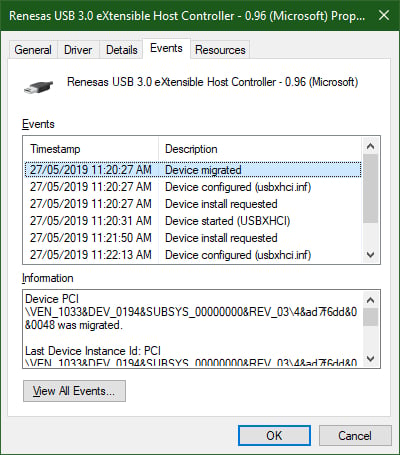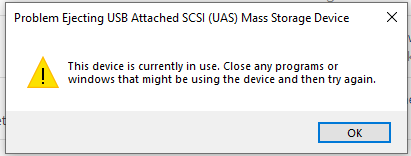USB Video Device - Driver Download. Vendor:. Product: USB Video Device. Hardware Class. Windows 7 32-Bit Driver. Total Driver Versions: 10. Recommended Driver. Driver Date:: Release Notes: Driver Version: 5.8.54400.105: PC Matic. Roxio Video Capture Usb free download - Webcam Video Capture, Easy Video Capture, Roxio Creator, and many more programs. Hi, I think we have a same problem and i have resolve it on my 13-ad024tu since i have tried every method to get a video output from usb-C port. In fact Envy series surppoted a not-so-popular style of video transport since they used displayport altative mode, which means you need to use a usb-c to dispalyport cable or adaptor. Download Realtek USB Audio Driver 6.3.9600.40 for Windows 10 64-bit (Sound Card). Just download the package, run the setup, and follow the on-screen instructions. Bear in mind that, even though other operating systems might be compatible as well, it is not recommend that. Download USB2.0 PC Camera (SN9C201) for Windows to image driver.
-->This article helps to fix an issue in which Windows 10 doesn't install specific drivers for USB audio devices on the first connection.
Original product version: Windows 10, version 1703
Original KB number: 4021854
Symptom
When you connect a USB audio device to a Windows 10 Version 1703-based computer the first time, the operating system detects the device but loads the standard USB audio 2.0 driver (usbaudio2.sys) instead of the specific device driver.
Cause
This issue occurs because the USB audio 2.0 driver (usbaudio2.sys) isn't classified as a generic driver in Windows 10 Version 1703. Therefore, the system assumes that a compatible, nongeneric driver is installed for the device even though the driver is generic.

This issue also causes Windows 10 Version 1703 to postpone the search for other compatible drivers through Windows Update that typically occurs immediately after you install a new device.
Resolution
To fix this issue, use one of the following methods.
Method 1
To resolve this issue, install update 4022716.
Method 2
If the device-specific driver is distributed through Windows Update, you can manually update the driver by using Device Manager. For more information about how to do this, see update drivers in Windows 10.
Method 3
If the device is not yet connected, first install the device-specific driver, such as by using the appropriate installer. After the device-specific driver is installed, Windows 10 will select that driver instead of the standard USB audio 2.0 driver when you first connect the device.
Note
See the device manufacturer's user guide for specific instructions about how to install the driver.
Method 4
If the driver isn't distributed through Windows Update, you can manually reinstall the driver. To do this, follow these steps:
- Install the device-specific driver (see Method 2).
- Open Device Manager.
- Right-click (or tap and hold) the name of the device, and then select Uninstall.
- Restart the computer.
When it restarts, Windows will try to reinstall the device by using the device-specific driver.
Most of the time I deliver finished photos and videos to my clients via digital download. It’s quick, easy and saves me time and money by avoiding the hassle of uploading files to a physical storage device and sending it in the mail.


However, it is occasionally necessary to copy photography and videos to a USB flash drive for delivery to a client (some clients don’t have reliable high speed internet, some want a physical product, some don’t have a reliable PC and some are just not tech savvy enough to figure out how to download a large number of files from a link).
One issue that I have started to run into – especially with longer or 4K video – is transferring files larger than 4 GB to a USB flash drive.
Fortunately, the solution is relatively easy – here is how to copy files larger than 4 GB to a USB flash drive, memory card or other FAT32 storage device.
The Problem
Most USB flash drives (and memory cards) come pre-formatted with the FAT32 file system. While this is fine for day to day use, one key limitation of the FAT32 file system is that you cannot save individual files that are over 4GB in size.
Back in 1995 when the FAT32 file system was introduced, this wasn’t much of a problem – nobody had 4GB files! However, with 4K video, longer HD videos or ProRes / DNxHD video clips, exceeding that 4GB file size limit isn’t too hard to do.
If you try to copy a file that is larger than 4GB to a USB flash drive with the default FAT32 file system, you will get an error saying that there is not enough space to copy the file (even if its say a 6GB file being copied onto a 64GB USB flash drive with lots of room to spare).
The Solution
To solve this problem, all you need to do is format your USB flash drive with the exFAT file system.
exFAT has no file size limitations and is compatible across most modern devices including both Windows and macOS (although there may be some compatibility issues with older devices).
To format your USB flash drive with the exFAT file system: select the USB drive you want to format from your file explorer, right click and select “Format”, then in the format dialogue, choose exFAT under the File System drop down menu.
Warning! This will delete everything on the drive you are formatting, so make sure you have selected the correct drive and that you don’t have any critical data saved that you don’t want to lose.
Periferica Video Usb #3 Driver Download For Windows 8

If you are working in a strictly Windows environment, you could also format your USB drive to NTFS, but exFAT is more compatible across platforms and is specifically optimized for flash drives.
Periferica Video Usb #3 Driver Download For Windows 10
If you’re interested, here is a great article that explains the difference between FAT32, exFAT and NTFS.
